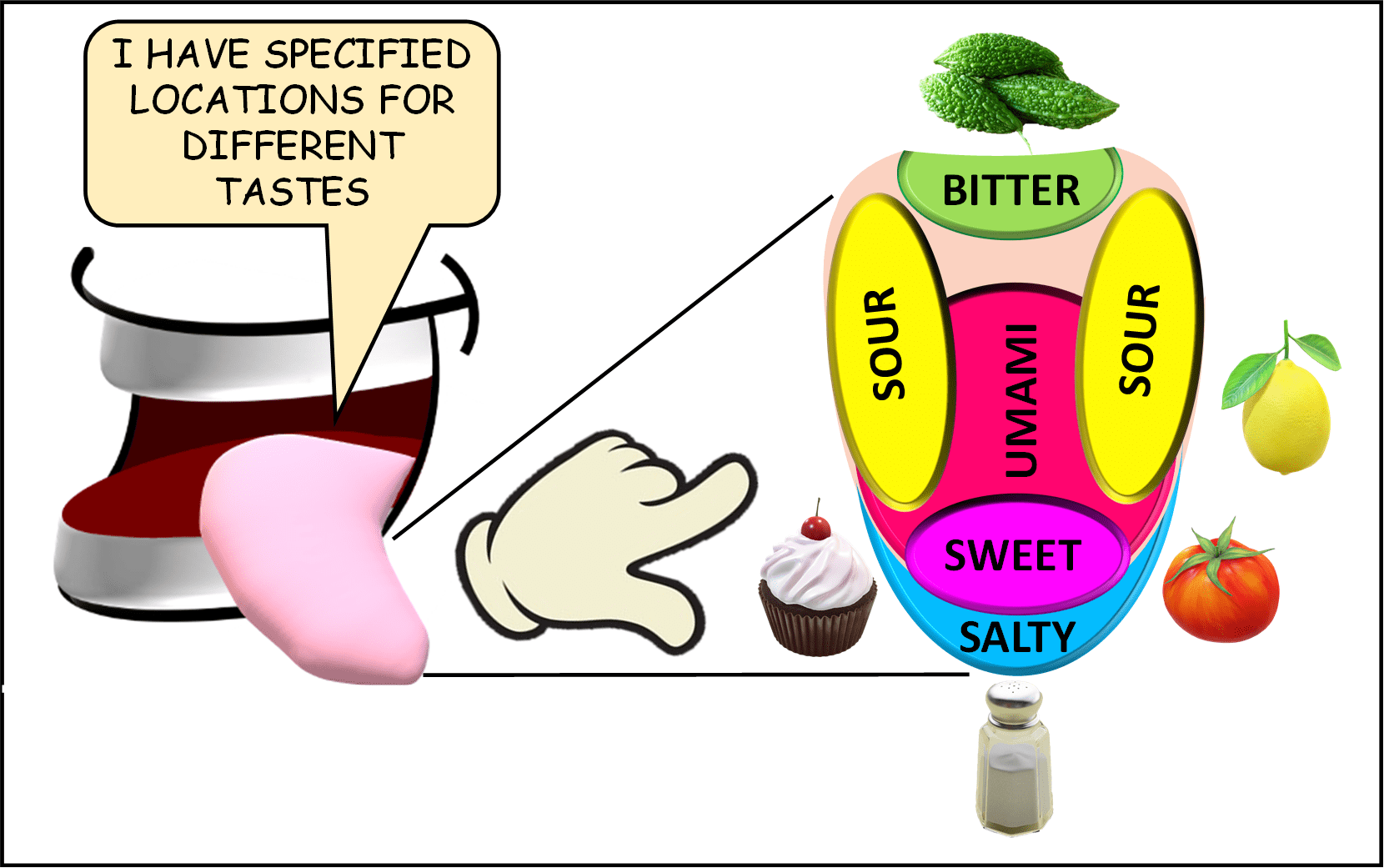I am a foodie, and the concept of one single favorite dish is nonexistent in my life. I love so many delicacies that I can’t settle for one (well, biryani anytime!). I like eating and watching people cook, so I usually switch to Fox Life or MasterChef Australia, the latter being my obsession lately. Talented chefs, interesting rounds, phenomenal diversity of ingredients, cuisines, techniques, the judges commenting on the flavor and texture of every dish as well as pointing out the negatives. Service challenges are fun to watch, and I deeply admire the chefs supporting and helping each other out, even though they are opponents. Enough of the blabbering, let’s cut to the chase! I feel my addiction to this cooking show has inspired me to present an article about the gustatory pathway.
The gustatory system is the sensory system that enables us to relish our favorite pani puris from the streets, pizzas and burgers from the fast-food joints, and of course, healthy home-cooked food. Gustatory system helps us recognize five tastes: sweet, sour, bitter, salty and umami, the Japanese term for savory.

Tongue is a muscular organ in our oral cavity, helping us with speech and mixing food properly with saliva, before being sent down the esophagus. Tongue receives the stimulus of taste where the gustatory pathway starts off. The surface of tongue appears rough because of small protrusions called papillae. Papillae bear taste buds with taste receptor cells that receive the stimulus. These taste buds are also found in other areas such as the soft palate, upper esophagus, epiglottis and cheeks.
If we observe a taste bud, it consists of taste receptor cells arranged in the shape of an onion.

They have receptors on their surface, enabling them to detect the chemicals present in the food. These chemicals, referred to as tastants, can dissolve in saliva and bind to receptors present on these cells. Molecular studies have revealed that there are specific receptors for certain types of taste. For instance, sweet is detected with the help of receptors T1R1 and T1R3, whereas T1R1 and T1R2 are used to identify umami. T2R helps detect bitter taste.

These cells receive the stimulus from food and transmit it to the gustatory neurons, which forms the part of 7Th, 9Th, and 10th cranial nerve. The information subsequently gets transmitted to the gustatory relay neurons present in Nucleus of the Solitary Tract (NRT). NRT is a group of nuclei (a cluster of nerve cell bodies) present in the brainstem or medulla oblongata. It acts as the relay station and transfers information received from the gustatory neurons. It receives stimulus from the respiratory, cardiovascular and gastrointestinal system too. In case of rodents, the signal is transported to parabranchial nucleus, a cluster of neurons present in pons. Pons is a region of brain that comes in between the medulla and cerebellum. In humans, this step gets skipped since the signal jumps into the thalamus and finally, the gustatory cortex.
Flavor is one of the chief components of food which is an amalgamation of taste, smell, texture as well as the temperature of the edible item. The NTS, gustatory cortex is not just responsible to aid us in identifying the taste of food, but also process the smell, texture and the temperature of food, eventually deciphering the flavor. Hence, flavor requires the syncing of the gustatory, olfactory, and chemosensory pathway. Won’t you be pissed off if you are served a cold and soggy bowl of Maggi? You will get that savory taste, but you won’t be able to enjoy it, as the aroma, texture and temperature are not in your favor. We can enjoy food only when we are able to experience the flavor and not just the taste.
There are other areas of the brain that play a role in taste and flavor perception. Let’s say you visited a restaurant for dinner and it is your first time there. You tried the food, you absolutely loved it and you will feel like giving it another go. That restaurant is now one of your favorites. It might happen that one of the dishes you ordered tasted bland. You would avoid going back to that plate of food and won’t order it in the future. We usually say that food tastes better when we are starving and that is biologically true. Researchers have also observed that hunger influences taste. Experiments conducted have revealed that hunger intensifies taste perception and makes our taste buds more sensitive to stimuli. Our brain helps us in differentiating palatable and non-palatable items so that we don’t end up swallowing everything that enters our mouths. All of this is regulated by the limbic system. It is that part of the brain that deals with memory, emotional and behavioral response. It is in association with the gustatory system in order to serve its purposes. Amygdala, mediodorsal thalamus, frontal cortex, and hypothalamus, which form a part of limbic system helps develop memories related to food we consume, provide the reward value of taste that compels us to just dive into the dish we love, makes us develop aversion to certain food items, prevents us from ingesting non-edible fluids or solids, aids in flavor perception and also regulates our feeding habits.
Taste is as important as any other stimulus, especially for those fussy eaters (I was, until I had no other choice but to eat food from hostel mess). Taste and flavor, which sound so simple, involves complex processing by an array of neurons and various regions inside the brain. It ultimately helps us to differentiate between sweet and sour, a strong flavor and a comparatively subtle one, vanilla and chocolate ice cream or even a chocolate cake and chocolate mousse. The gustatory system makes us do something more than just feeding on foodstuffs for survival. It helps us to savor every mouthful and celebrate the essence of food served around the world packed with a plethora of ingredients, textures and flavor!
…
Sources:
- https://www.ncbi.nlm.nih.gov/pmc/articles/PMC6989094/
- https://www.ncbi.nlm.nih.gov/pmc/articles/PMC7884326/
- https://www.ncbi.nlm.nih.gov/pmc/articles/PMC3804333/
- https://www.scientificamerican.com/article/hunger-intensifies-taste/
- https://www.kenhub.com/en/library/anatomy/the-solitary-tract-and-nucleus
- https://en.wikipedia.org/wiki/Gustatory_cortex
Writer

Sreelakshmi S Kumar
Sreelakshmi is pursuing her undergraduate course degree in Zoology from Fergusson College, Pune. The field of Immunology and Virology interests her the most. She harbors her love for science and teaching inside her, and she wishes to teach in the future. Dancing, reading and calligraphy are some of her leisure activities and she is a big foodie too!
Illustrator

Jayakrishnan Nair
He has completed his Masters in Medical Biotechnology from The Maharaja Sayajirao University of Baroda and is currently an active researcher in Molecular Epidemiology at The Centre for Cancer Epidemiology, Navi Mumbai. His journey in Science and Creativity began together during his childhood days. He believes that Art and Science indeed have a beautiful world altogether in them and sailing across its spectrum inspires him to sow his thoughts deep into Science and carve out the pillars of Art through them! Being a Science enthusiast and an Artist, he wishes to devote a good share of his life to wildlife and marine conservation as he feels that the creativity of nature needs to be taken care of in the current era.
